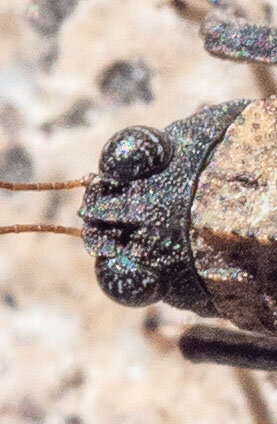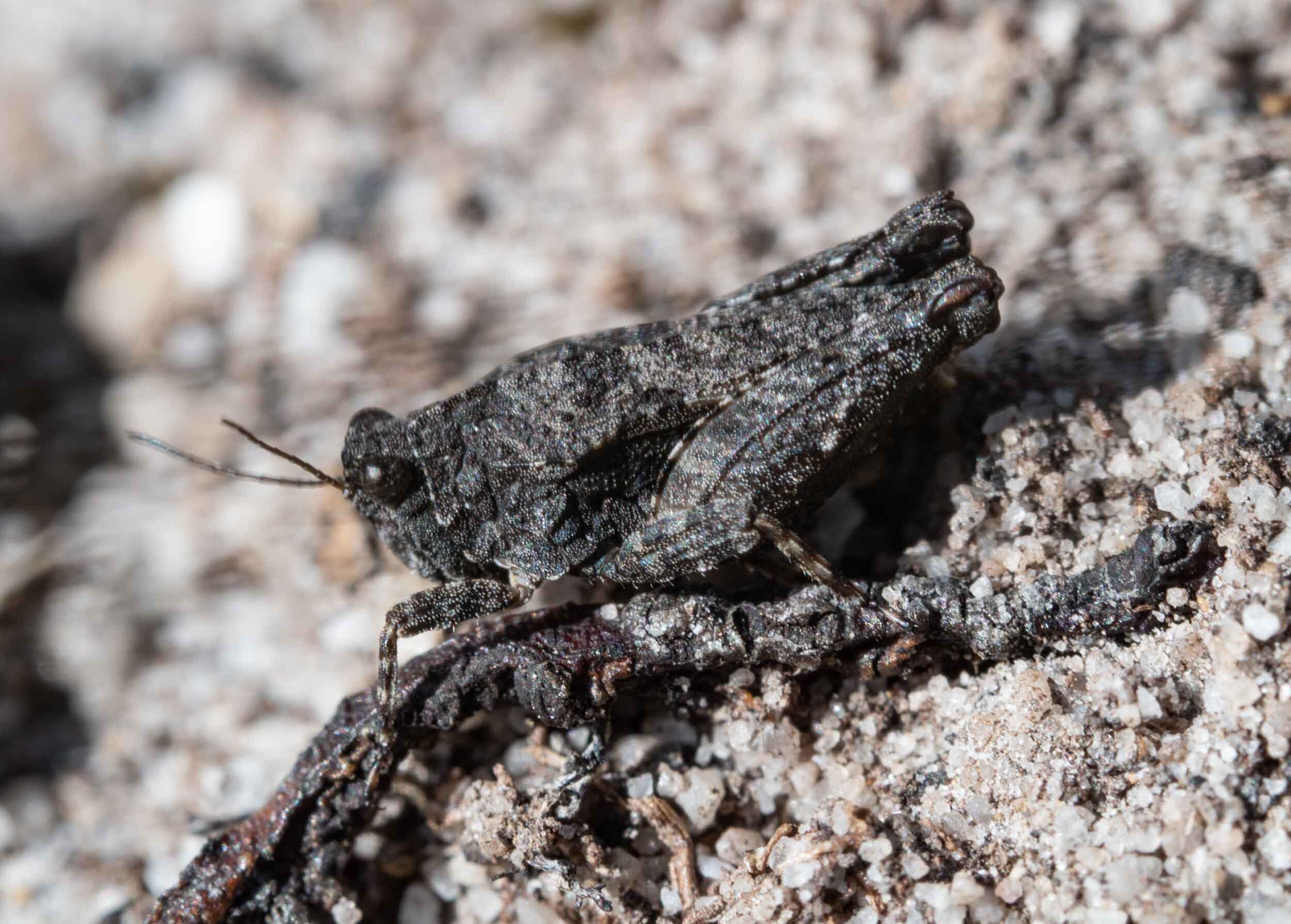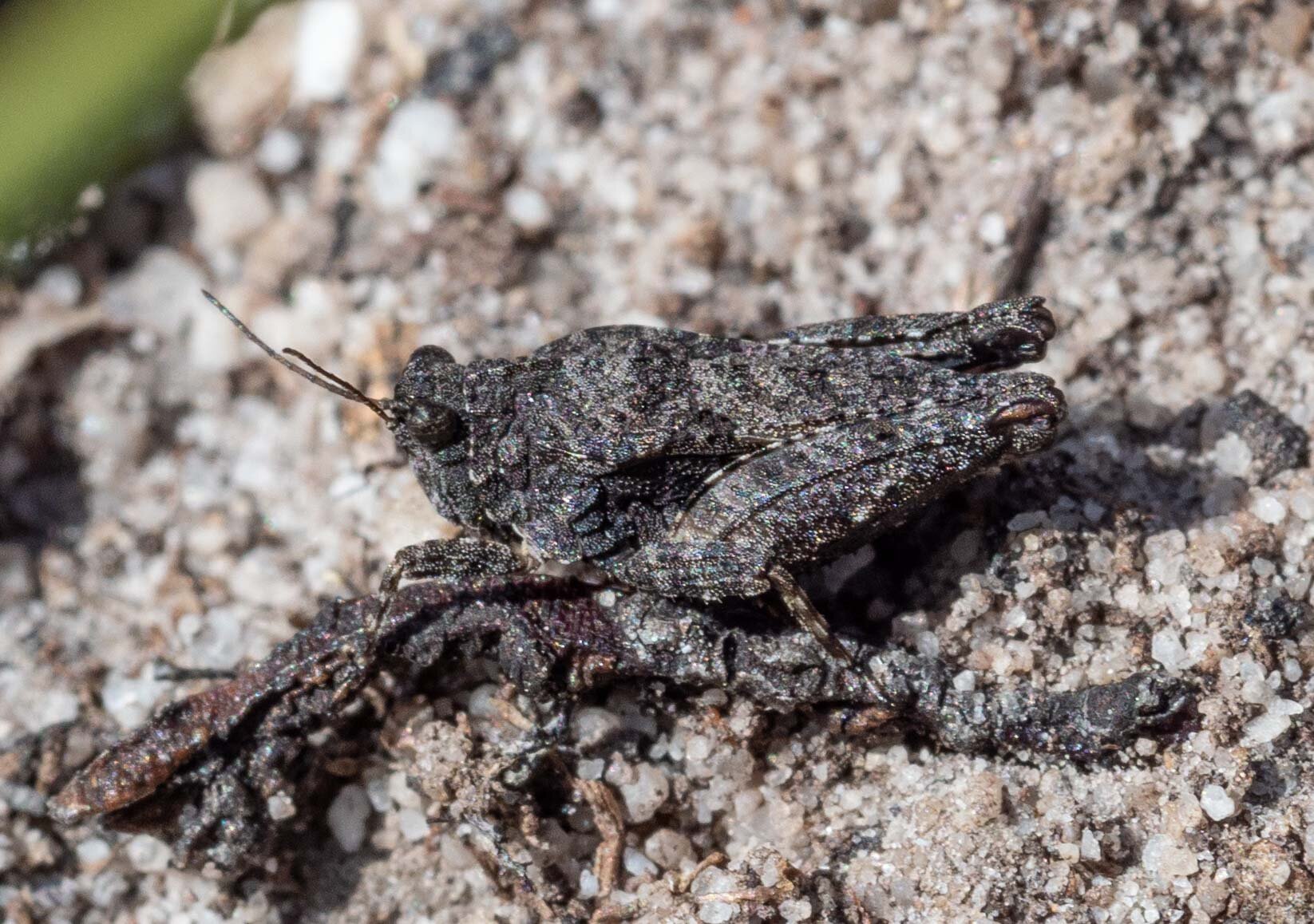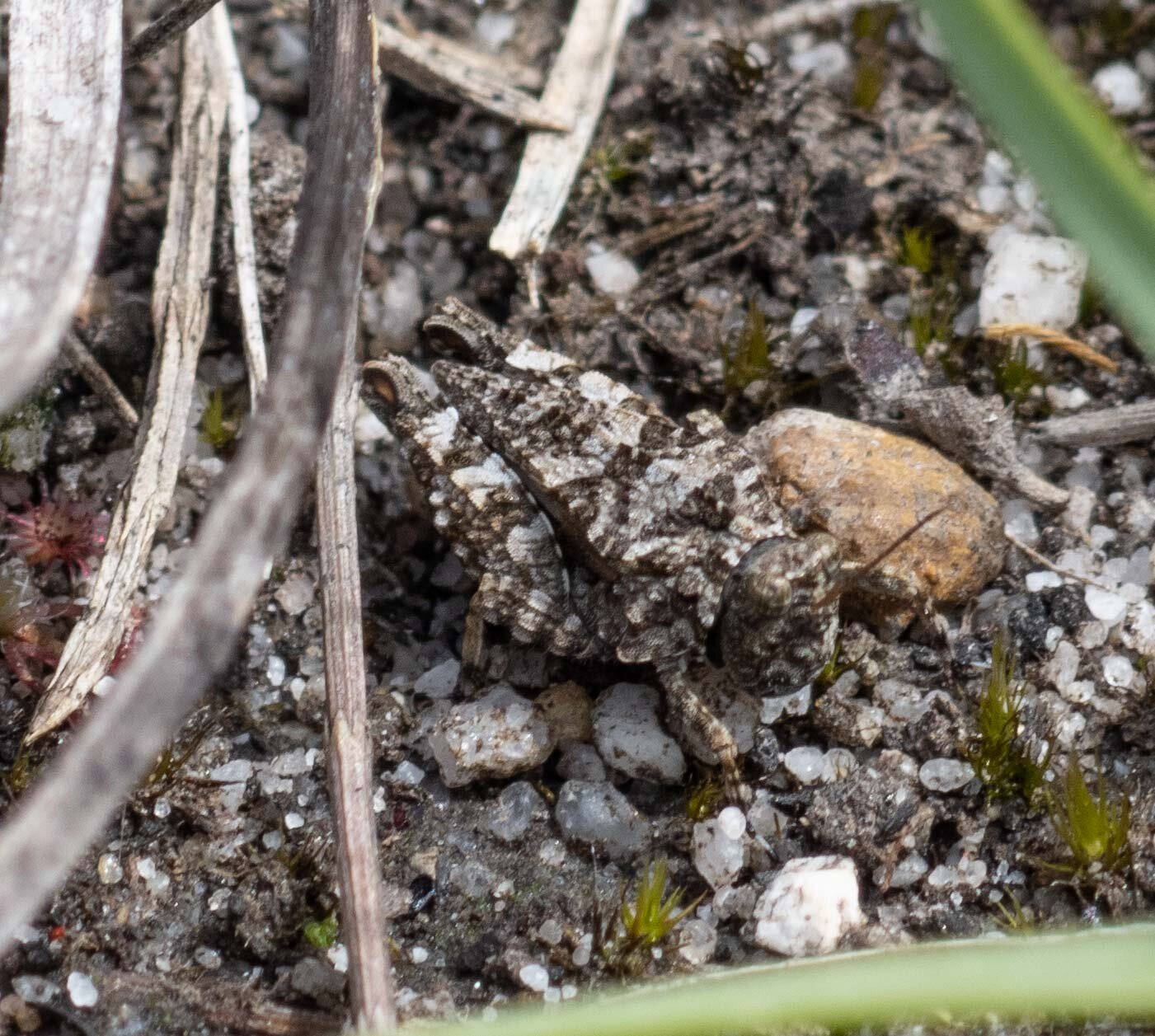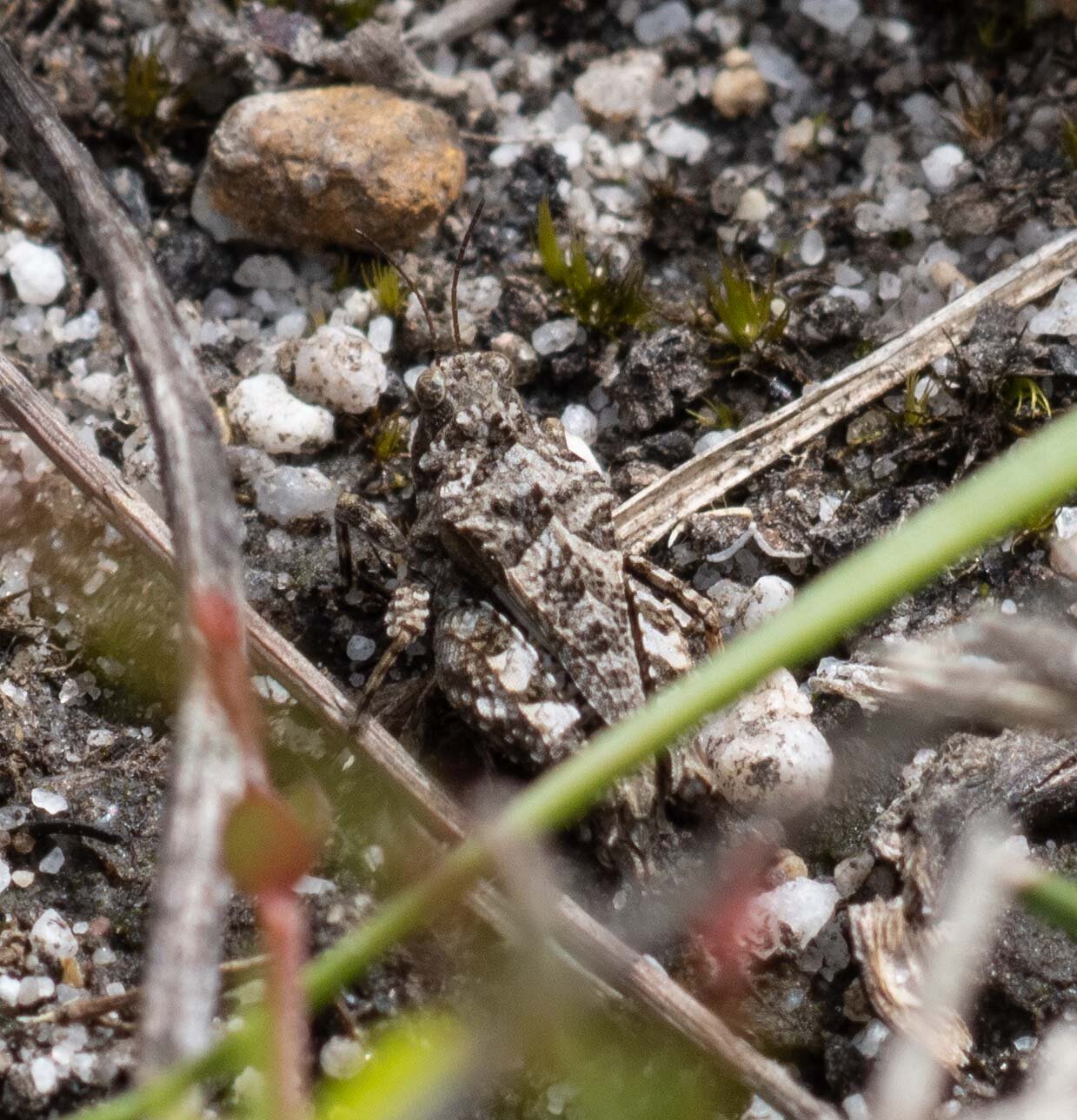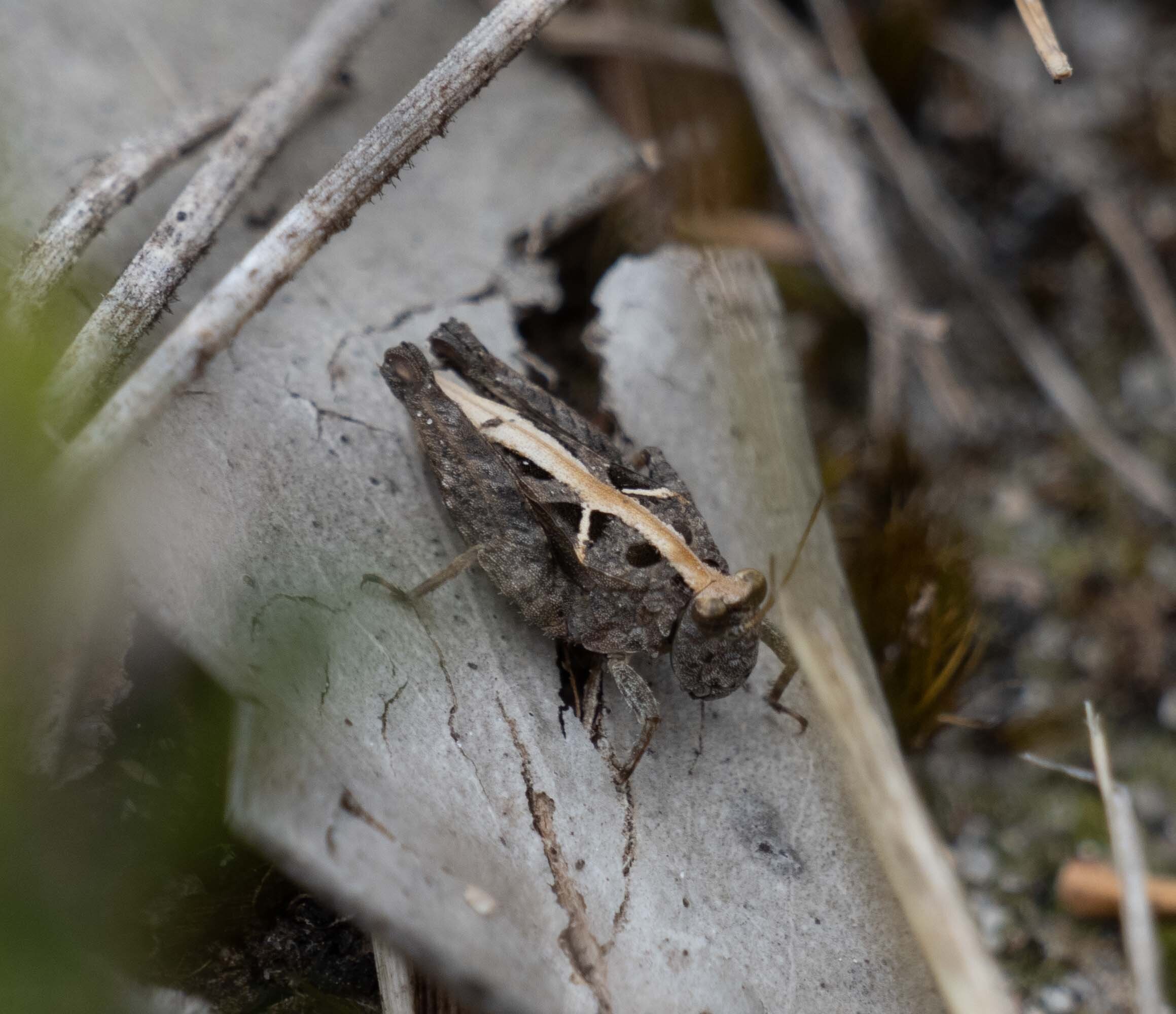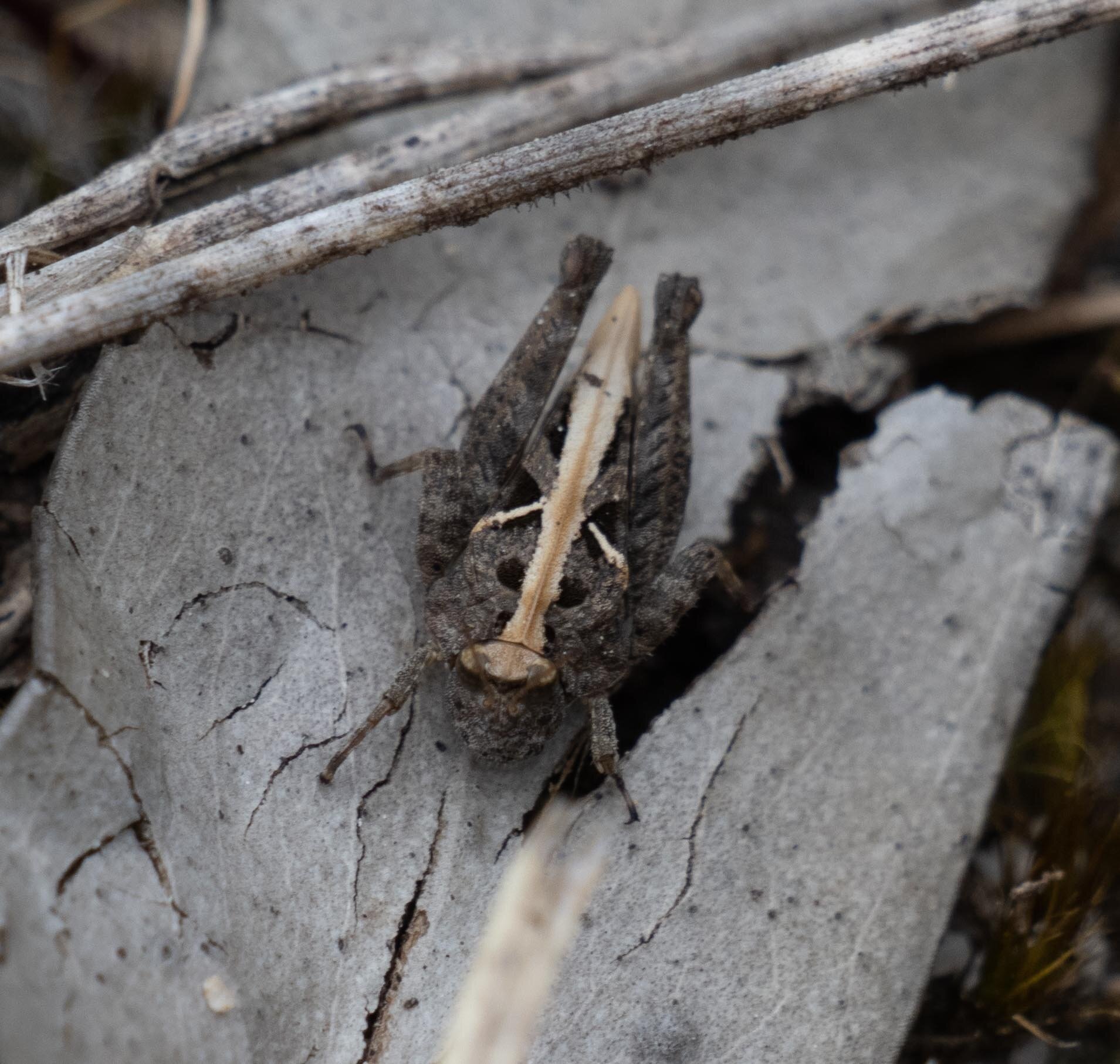Tetrigidae

Workbook
Notes for identification of Tetrigidae species
On Jan 5, 2021, I found a single insect in front of the deck of the house, in an open area with vigorous growth of forbs and grasses. I obtained one photograph of it and made an observation on iNaturalist.
On Feb 26, I found a similar insect nearby, in front of the wood-fired oven. This one had a different colouration on the pronotum but otherwise had an almost identical morphology, based on numerous photographs. This is the iNaturalist observation I made of this insect.
I used keys and species descriptions in Rehn, J.A.G 1952 “The Grasshoppers and Locusts of Australia vol. 1” CSIRO to identify these insects. This is the most recent source I have been able to find with species descriptions of Australian tetrigids, apart from the very recent publication by Storozhenko, S (2019) on the Bufonidini.
Feb 26 insect.
Based on photomatching with observations on iNaturalist, I concluded that this was a Tetrix sp.
There are 6 species of Tetrix listed in AFD - T. collina, T. dorrigensis, T. montivaga, T. phyrnus, T. priscus and T. irrupta (with 4 subspecies, T. irrupta irrupta, T. irrupta absona, T. irrupta accola of the latter)
Identification of Tetrix species using Rehn’s key
To identify the species/subspecies I worked through the key in Rehn (1952). Statements in quotes are taken from his key.
1. “Pronotum in profile with dorsal outline not markedly elevated, little humped inter-humerally (between the femora of the forelegs), as a whole not undulating much”.
This rules out T. phrynus and T. prisca , which have a pronounced hump on the pronotum
2. “Fastigial interspace between eyes in female subequal to or narrower than the breadth of a single eye, in male slightly greater (vs. fastitigial interspace definitely surpassing the breadth of a single eye).”
The relative inter-eye/eye breath distance in my insect (Figs. 1, 3) appears somewhat greater than shown in Rehn’s photos (Figs. 2, 4). However his photos show a female, whereas mine appears to be a male.
“Facial outline in profile broadly, evenly and regularly low arcuate from the fastigio-facial angle to the median ocellus (vs. not broadly arcuate but with an inter-ocellar concavity).” The photo of my insect (Fig. 5) appears to match the first alternative. However I was unable to obtain a direct frontal shot.
Fig. 5
“Pronotum in profile with dorsal line relatively even.” A comparison between photos of my insect and a female Tetrix collina paratype photo by Rehn shows that this condition holds.
“Pronotal carinae moderately glabrous.” Photos showing reflection of light from the carinae of my insect (Figs. 1, 3, 6) suggest that this condition also holds.
“Wings and tegmina fully developed.” These were not seen in my insect. However, in brachypterous individuals wings are shorter than the pronotum and would only be seen by lifting the pronotum, which I did not do.
The combination of the above features supportsTetrix collina as the identity of my insect.
Further support for an ID of Tetrix collina
The detailed description of Tetrix collina provided by Rehn lends further support to this ID.
Key points include:
“Margin of the fastigium broadly arcuate laterally where superimposed on the eye surface” (Fig. 1).
“Surface of the fastigium appreciably excavate lateral to the median carina” (Fig. 1)
“In profile the dorsal line of the pronotum is relatively even, and in large part nearly straight with very slight prehumeral swell to the outline and obscurely undulate posteriorly.” “Median carina well and continuously elevated, not broken by transverse sulci.” (Fig. 6, 7)
“Caudal section of disk with lateral margins evenly and straight oblique convergent to near the acute caudal apex” (Fig. 9).
“Surface of disk moderately tectate in cross section, shallowly excavate at the position of the post-humeral velvety triangles and elsewhere with scattered nodules” (Fig. 6, 9). I have included a photo from Rehn as a comparison (Fig. 10).
The shape of the lateral lobes of the pronotum matches those shown in Rehn’s photos (compare Figs. 7, 8).
Structural variation
Rehn reports that Tetrix collina is dimorphic in pronotal length. In the brachypronotal phase the caudal extremity of the pronotum just reaches the subgenital plate in the male (see Fig. 9) and the apices of the ovipositor valves in the female. In the macropronotal phase, the apex exceeds the metathoracic femora by the length of the mesothoracic femora.
He also reports variation in the exact profile of the dorsal ridge of the pronotum, “this being more evenly arcuate throughout in some than in others”.
He also notes a great variation in the colouration of this species. He attributes colour and pattern variation in Tetrigidae in general as a camouflage strategy. My Feb 26 insect certainly looks well camouflaged! While I have only one photo of this individual, its similarity to this Jan 5 insect encourages me to believe it is the same species.
Distribution
Rehn 1952 reports that Tetrix collina has been found in eastern and south-eastern Australia from as far north as Walcha in northern NSW to as far south as Tasmania. He notes that it is apparently limited to more elevated parts of its range. Our finding of this species on the Far South Coast of NSW, 6km from the coast appears to extend that altitudinal range.
Update: 9 March, 2021
Josip Skejo, an expert on Tetrigidae taxonomy, disagreed with my ID of Tetrix collina for this species, based on the vertex morphology. He states that “T. collina has a narrower and more elevated vertex, so that in lateral view the face is rounded.”
He suspects that my insect is instead Paratettix argillaceus. Comparison between my images and photos of the holotype of this species on Orthoptera Species File do indeed show a strong similarity between the two.
The morphology of the face, fastigium and pronotum of my insect are closer to Paratettix argillaceus than Tetrix collina. The eye spacing in particular matches the former species better.
The shape of the lateral lobes of the pronotum is very similar in my insect and the holotype of Paratettix argillaceus (compare Figs. 14, 15 and 16).
Rehn (1952) gives the following diagnostic features for Paratettix argillaceus in his key:
median carina continuous to the anterior margin of the pronotum (Figs. 19, 20 white arrows)
short anterior carinae of pronotum parallel (Figs. 19, 20 black arrows)
least fastigial space between the eyes broader than the breadth of a single eye (compare Fig. 13, 21, 22)
in profile the median carina is not evenly arcuate, generally slightly depressed interhumerally and slightly elevated between that point and the anterior margin of the pronotum
Fig. 25 black arrows show median carina
in profile the facial line is weakly sinuate between the paired ocelli and never broadly arcuate from the median ocellus to the fastigio-facial angle (compare shape of facial line in Figs. 24 and 25)
surface sculpture strongly rugose (Fig. 25)
metathoracic femora are robust (compare Figs. 24, 25)
Looking more closely at my photos, I can now see that I overlooked the tegmina on my insect. It is marked with an arrow in Fig. 26.
Fig. 26
In combination, these similarities between my insect, the photographs of the holotype of Paratettix argillaceus and photographs and descriptions of this species in Rehn (1952) make me confident that this is the identity of my insect.
Distribution
Rehn (1952) reports that Paratettix argillaceus is widely distributed along the east coast of Australia from Whitsunday Island in Queensland, south to Healesville in Victoria and also in Tasmania. It occurs inland but also near the coast.
Variation
Rehn (1952) describes in detail the considerable variation in size, colour and pronotal and wing development of this species. Such variations can be seen in the same location and are often present in a single sex.
Therefore, despite its very different colouration, the insect I photographed on Jan 5 (Fig. 26) may also be Paratettix argillaceus - given its similar morphology to the insect seen in the same location on Feb 26.
Fig. 27
I have seen tetrigids at the helipad on several occasions that closely resemble these Paratettix argillaceus individuals seen at home. While these show very different colouration, they all appear to be the same species. They show the following diagnostic features for Paratettix argillaceus.
pronotum reaches the end of the abdomen (brachynotal form)
median carina continuous to anterior margin of pronotum
closest distance between the eyes is greater than width of an eye
in profile the median carina is not evenly arcuate, generally slightly depressed interhumerally and slightly elevated between that point and the anterior margin of the pronotum (Fig. 25, 26)
surface sculpture strongly rugose
metathoracic femora are robust
the shape of the lateral lobes of the pronotum is very similar to the holotype of Paratettix argillaceus
This is a workbook page … a part of our website where we record the observations and references used in making species identifications. The notes will not necessarily be complete. They are a record for our own use, but we are happy to share this information with others.












